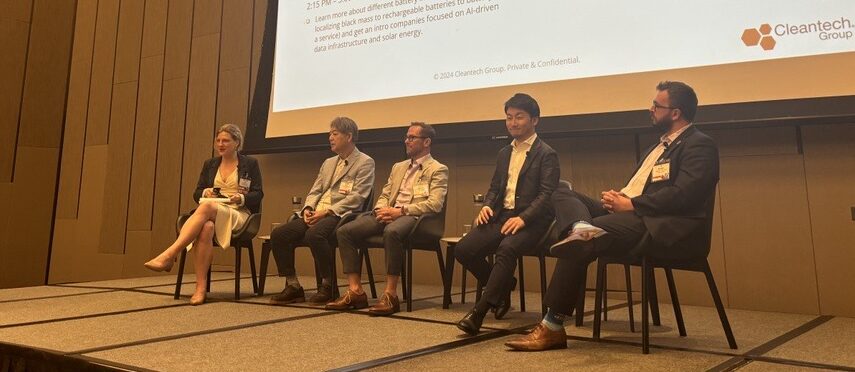It’s a running joke in energy circles that fusion is always 20 years away. But as we heard at Cleantech Forum Asia, that joke no longer lands. Quietly and rapidly, fusion is transitioning from a physics moonshot to an engineering race—where companies are trading scientific hypotheses for hardware, milestones, and power plant roadmaps.
What’s changed? The Asia-Pacific region, long a stronghold of fusion science, is beginning to lead in fusion commercialization. From Japan’s coordinated national push to support industrial fusion, to nimble start-ups in New Zealand building reactors in months—not decades—the contours of fusion’s future are taking shape.
This blog dives into what’s shifting, why it matters, and where to keep your eyes in the coming years.
From Science Project to Energy Play: Fusion’s Commercial Turn
Fusion is no longer confined to national labs or physics textbooks. It’s becoming a commercially viable energy frontier. Speakers from General Fusion, OpenStar Technologies, Kyoto Fusioneering, and Helical Fusion echoed a striking consensus: the scientific hurdles are largely behind us. What remains are engineering and deployment challenges—and those are solvable.
OpenStar Technologies COO, Al Simpson, shared that the company achieved its first plasma within two years on just $10M, proving the viability of its levitated dipole design. “We’re spending our resources on engineering, not on physics problems,” Simpson noted.
Asia Rising: From Tech Hub to Fusion Ecosystem
While fusion investments once skewed heavily toward the U.S., capital and momentum are shifting eastward. Japan and China are emerging as hotspots. Kyoto Fusioneering alone recorded over $110M in revenue last year and is supporting the construction of a demonstration reactor by 2035—with the goal of collaborating with other start-ups and national partners across Asia.
Helical Fusion, another Japanese firm, is pushing stellarator-based designs forward by tapping national lab IP and building critical magnet components with domestic industrial partners. “Japan has both the talent and infrastructure to scale fusion,” COO Yosuke Kubo shared. “Our aim is to commercialize in energy-constrained markets like Japan and Singapore.”
Policy and Capital: The Double Helix That Will Shape Fusion
Capital scarcity remains a real threat. Dan Fleischer of General Fusion outlined the tension: private fusion firms are scaling machines while macroeconomic conditions, regulatory uncertainty, and LP hesitancy are slowing down traditional fundraising. “Venture capital can’t go it alone. Sovereign capital and policy clarity are now essential,” he emphasized.
Indeed, speakers repeatedly pointed to the need for stronger government-industry collaboration. Japan’s Ministry of Economy, Trade and Industry has already opened its funding frameworks to start-ups, with several panelists citing hybrid capital stacks as the only realistic path forward.
Regulation Must Catch Up—But Not Copy Fission
A critical discussion emerged around regulation. Most countries still lack fusion-specific rules, and there’s growing concern that applying nuclear fission standards to fusion could stifle progress. “Fusion doesn’t carry the same risk profile,” noted Kubo. “It should be regulated like radioisotopes used in hospitals, not reactors built in the 1970s.”
Japan, the UK, and the U.S. are moving toward tailored fusion regulations. Public perception and policy should take into account the differences between fission and fusion and not lump them together. Fission projects can get delayed and expensive as a result of extensive policy and permitting measures, and this is a pitfall that fusion reactors should be able to avoid if the right framework is put in place. The consensus: regulation is necessary but must be fit-for-purpose.

Selene Law, Senior Associate, Energy & Power, Cleantech Group
Al Simpson, COO, OpenStar Technologies
Dan Fleischer, Head of Investor, Relations, General Fusion
Yosuke Kubo, COO, Helical Fusion
Takashi Imai, Director & Chief Corp, Management Offcier, Kyoto Fusioneering
The Hyperscaler Question: Where Are the Corporate Off Takers?
Despite record growth in data center energy demand—growing at 12% CAGR—corporate offtake in fusion is nearly nonexistent. The sole notable exception: Microsoft’s PPA with Helion Energy (based in Washington, U.S.). Why the disconnect?
“Commercial contracts are the key to unlocking infrastructure finance,” said Fleischer.
“Fusion can meet the baseload demands of AI and cloud growth—but it needs more than hype. It needs purchase orders.” Simpson added that the next generation of hyperscalers must see themselves as infrastructure builders, not just buyers of clean electrons.
Closing Thought: Fusion Needs Allies, Not Just Advocates
What came through at Cleantech Forum Asia wasn’t just optimism—it was realism. Fusion start-ups are collaborating on shared supply chains, magnet production, tritium handling, and even lobbying. The mood is no longer one of siloed science, but of systems-building.
As Kyoto Fusioneering’s Takashi Imai put it, “The technology is ready. Now we need to integrate.” That will take diverse capital, flexible regulation, corporate commitments, and a regional strategy that treats energy not just as a commodity—but as a sovereign asset.
The 2030s may be fusion’s deployment decade. And if the Forum is any indication, Asia plans to be at the center of it.

